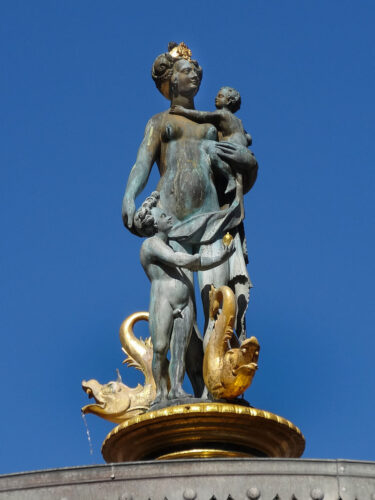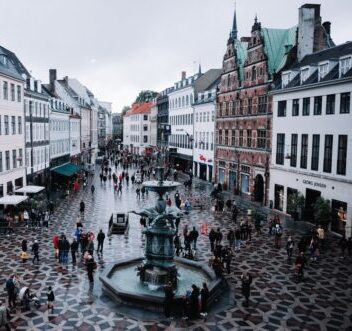Gammeltorv
About three blocks east of the City Hall Square, Strøget street meets Gammeltorv. Gammeltorv or the old market is a square that predated Absalon, the historic founder of the city. This was the main square of the village of Havn before the castle was built and the town’s marketplace during Absalon’s era.
Copenhagen’s first town hall was located on its eastern side and was destroyed when the Hanseatic League sacked the city in 1368 along with Absalon’s castle. Since 1374 the square was referred to as the Forum, while after 1446 the name changed to gamle torv (the old square) which was gradually turned into today’s Gammeltorv. Up to the Middle Ages, Copenhageners drew their water from wells dug inside the city, which were very often polluted.
In the 16th century water from Emdrup Lake started being channeled directly into Copenhagen through hollowed-out pine trunks. The 6 km trunk line reached Gammeltorv where the first fountain of the city was built, providing cleaner and fresher water to its residents. That fountain would evolve into the famous Caritas Well, built-in 1608, by King Christian IV when he also rebuilt the city hall in Renaissance style.
That city hall wouldn’t survive the great fires of 1728 and 1795 but the fountain would. The figures of the fountain, a pregnant mother with her two children, represent charity (Caritas in Latin), one of the main religious virtues. Three gilded dolphins on her feet spray water down to the copper basin with golden details that supports the first pool of water. The whole fountain is considered one of the prime examples of the Renaissance style in Copenhagen today.




